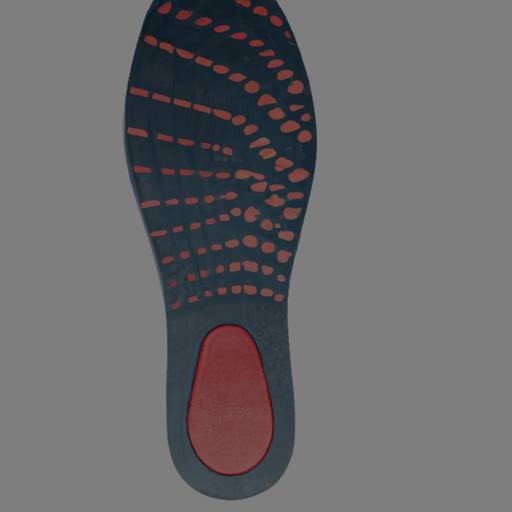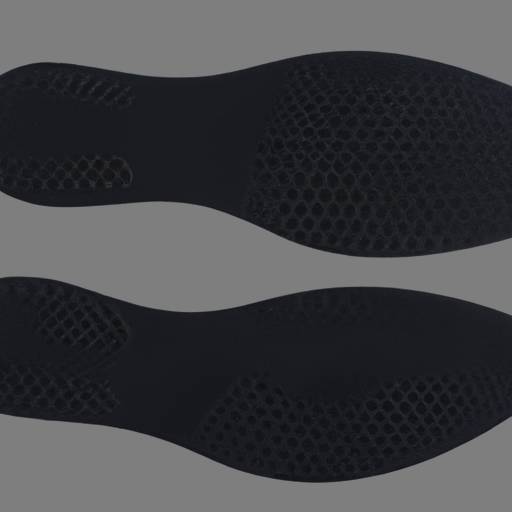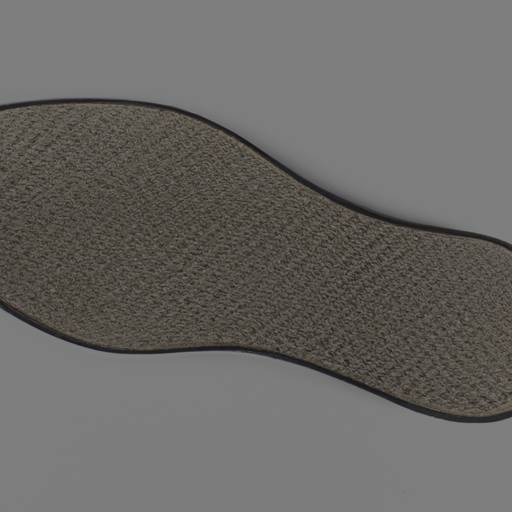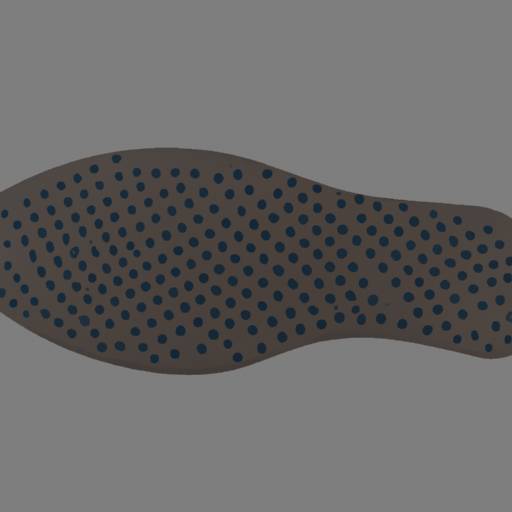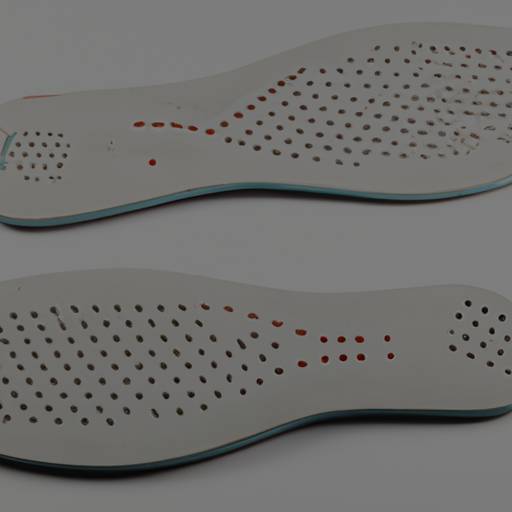Understanding Rigid Orthotics: A Guide to Arch Support
Understanding Arch Support
Arch support plays a crucial role in maintaining proper foot health and preventing discomfort. Supporting the arches of the feet helps distribute weight evenly, improves stability, and reduces the risk of various foot conditions. Let’s explore the importance of arch support and the different types available.
The Importance of Arch Support
The arches of the feet act as natural shock absorbers, absorbing the impact of each step we take. However, some individuals have naturally high arches or low arches, which can affect the distribution of weight and lead to imbalances. Insufficient arch support can result in conditions such as plantar fasciitis, flat feet, and overpronation, causing pain and discomfort.
By providing adequate arch support, you can help maintain the natural alignment of your feet, which in turn promotes proper body alignment. This can alleviate strain on the feet, ankles, knees, and even the lower back. Arch support is particularly important for individuals who spend long hours on their feet or engage in activities that put significant stress on the feet, such as running or hiking.
Different Types of Arch Support
There are various types of arch support available to suit different foot types and conditions. Some common types include:
- Rigid Arch Support: Rigid orthotics are designed to provide maximum support for individuals with high arches or excessive supination (outward rolling of the foot). These orthotics have a firm structure and help stabilize the foot and distribute weight evenly. They are often recommended for individuals with structural foot abnormalities or for those who require significant support. Check out our article on rigid arch support for more information.
- Semi-Rigid Arch Support: Semi-rigid orthotics offer a balance between flexibility and support. They are suitable for individuals with moderate arch issues or those who require a combination of stability and cushioning. These orthotics provide arch support while still allowing some natural foot movement.
- Flexible Arch Support: Flexible arch support is designed to provide cushioning and mild support for individuals with low arches or flat feet. These orthotics help absorb shock and reduce pressure on the arches. They are often recommended for individuals with flexible foot structures.
- Custom Arch Support: Custom orthotics are individually crafted to suit the specific needs of an individual’s feet. These orthotics are created based on a detailed analysis of the foot structure and gait pattern. Custom orthotics offer the highest level of support and are beneficial for individuals with complex foot conditions or those who have not found relief with other types of arch support.
When selecting arch support, it’s important to consider your specific foot type, any existing foot conditions, and the activities you engage in. Consulting with a healthcare professional, such as a podiatrist or orthopedic specialist, can help determine the most suitable arch support for your needs.
Understanding the importance of arch support and the different types available can help you make informed decisions about the best way to support your feet. Whether it’s through rigid orthotics, semi-rigid arch support, or flexible orthotics, finding the right arch support can contribute to improved foot health and overall comfort.
Introducing Rigid Orthotics
Rigid orthotics are a type of arch support that can provide significant benefits for individuals seeking stability and comfort. Let’s dive into what rigid orthotics are and how they provide the much-needed arch support.
What are Rigid Orthotics?
Rigid orthotics are specially designed inserts or insoles that are typically made from firm materials like plastic or carbon fiber. These orthotics are specifically crafted to provide structural support to the arch of the foot. Unlike flexible or soft orthotics, which are more cushioning in nature, rigid orthotics are known for their ability to control foot motion and provide maximum support.
Rigid orthotics are typically prescribed by healthcare professionals such as podiatrists or orthopedic specialists. They are custom-made to fit the unique contours of an individual’s feet, ensuring proper alignment and support. These orthotics are inserted into the shoes and provide support to the arch, helping to distribute the body’s weight evenly.
How Do Rigid Orthotics Provide Arch Support?
Rigid orthotics work by redistributing forces exerted on the foot during daily activities. They provide support to the arch, which is the curved part of the foot between the heel and the ball of the foot. By stabilizing the arch, rigid orthotics help to align the foot and ankle properly, reducing excessive pronation (inward rolling of the foot) or supination (outward rolling of the foot).
The firm materials used in rigid orthotics offer excellent resistance to forces, helping to control abnormal foot movement and maintain proper foot alignment. This can be particularly beneficial for individuals with conditions like flat feet or high arches, as rigid orthotics can help correct and support these issues.
By providing optimal arch support, rigid orthotics can help alleviate various foot problems and conditions, including plantar fasciitis, metatarsalgia, and shin splints. They can also promote proper biomechanics, which can have a positive impact on the alignment of the entire lower body.
Understanding the benefits and considerations associated with rigid orthotics is essential for individuals seeking arch support. However, it’s important to consult with a healthcare professional, such as a podiatrist, to determine if rigid orthotics are suitable for your specific needs. Custom-made rigid orthotics offer the best fit and support, ensuring maximum comfort and effectiveness.
Benefits of Rigid Orthotics
Rigid orthotics offer several benefits for those seeking arch support and foot stability. These specialized orthotic inserts provide a firm and solid structure that helps address various foot conditions and improve overall foot health. Let’s explore some of the key benefits of using rigid orthotics:
Improved Foot Alignment
One of the primary benefits of rigid orthotics is their ability to improve foot alignment. These orthotics are designed to support the arch of the foot, helping to distribute weight evenly across the entire foot structure. By promoting proper alignment, rigid orthotics can help alleviate strain on the feet, ankles, and lower limbs. This can be particularly beneficial for individuals with flat feet or high arches, as it helps to correct imbalances and provide a more stable foundation for the feet.
Enhanced Stability and Balance
Rigid orthotics play a significant role in enhancing stability and balance. By providing a solid and rigid base, these orthotics help to prevent excessive foot movement, reducing the risk of ankle sprains and other injuries. The stability offered by rigid orthotics is particularly beneficial for individuals who are involved in activities that require quick changes in direction or involve high impact on the feet, such as running or playing sports.
Alleviating Foot Pain and Discomfort
Rigid orthotics can be effective in alleviating foot pain and discomfort caused by various foot conditions. They help to provide support to the arch, reducing excessive pressure on the plantar fascia, a band of tissue that runs along the bottom of the foot. This can help relieve conditions such as plantar fasciitis, flat feet, and overpronation. By improving foot alignment and reducing stress on the feet, rigid orthotics can contribute to overall foot comfort and alleviate foot pain.
It’s important to note that while rigid orthotics offer numerous benefits, they may not be suitable for everyone. It’s recommended to consult with a healthcare professional or a podiatrist to determine if rigid orthotics are the right choice for you and to ensure proper fit and functionality. Additionally, it’s important to follow the guidelines provided by your healthcare professional for wearing and adjusting to rigid orthotics. For alternative arch support options, such as soft orthotics or custom orthotics, check out our article on alternative arch support options.
By providing improved foot alignment, enhanced stability, and alleviating foot pain and discomfort, rigid orthotics can be a valuable tool in promoting proper foot health and enhancing overall comfort.
Considerations for Using Rigid Orthotics
When using rigid orthotics for arch support, there are important considerations to keep in mind to ensure optimal comfort and effectiveness. These considerations include getting the right fit, adjusting to rigid orthotics, and proper care and maintenance.
Getting the Right Fit
To experience the full benefits of rigid orthotics, it is crucial to obtain the right fit. Ill-fitting orthotics can cause discomfort and may not provide the necessary support. It is recommended to consult with a podiatrist or healthcare professional who can assess your foot structure and recommend the appropriate orthotic size and shape.
When selecting rigid orthotics, it is essential to choose the correct arch height and length to match your foot’s anatomy. The orthotics should align with the natural contours of your arches, providing the necessary support and stability. If you are unsure about the right fit, seeking professional guidance can help prevent potential issues.
Adjusting to Rigid Orthotics
Wearing rigid orthotics for the first time may require an adjustment period. It is common to experience some initial discomfort as your feet adapt to the new support. Start by wearing the orthotics for a few hours each day and gradually increase the duration over time. This gradual transition allows your feet to become accustomed to the orthotics and reduces the likelihood of discomfort.
If you experience persistent pain or discomfort, it is important to consult with a healthcare professional. They can assess the fit of the orthotics and make any necessary adjustments to ensure optimal comfort and support.
Proper Care and Maintenance
To prolong the lifespan of your rigid orthotics and maintain their effectiveness, proper care and maintenance are essential. Here are some tips to keep in mind:
- Clean the orthotics regularly using mild soap and water. Avoid using harsh chemicals or abrasive materials that could damage the orthotic surface.
- Allow the orthotics to air dry completely before placing them back in your shoes.
- Avoid exposing the orthotics to extreme heat or direct sunlight, as this can cause warping or degradation of the materials.
- Inspect the orthotics periodically for signs of wear and tear. If you notice any cracks, splits, or deformities, it may be time to replace them.
- Follow any specific care instructions provided by the manufacturer or your healthcare professional.
By ensuring a proper fit, gradually adjusting to rigid orthotics, and practicing proper care and maintenance, you can maximize the benefits of arch support and improve the overall comfort and health of your feet. Remember, if you have any concerns or questions about using rigid orthotics, it is always best to consult with a healthcare professional for personalized guidance.
Alternative Arch Support Options
While rigid orthotics are an effective option for providing arch support, there are alternative options available that may better suit your needs. Let’s explore three of these alternatives: soft orthotics, flexible orthotics, and custom orthotics.
Soft Orthotics
Soft orthotics, also known as cushioned orthotics, are designed to provide gentle support and cushioning to the arch of the foot. These orthotics are often made from materials such as foam or gel, which mold to the shape of the foot, providing a customized fit.
Soft orthotics are particularly beneficial for individuals with sensitive or painful arches. They help distribute pressure evenly across the foot, relieving discomfort and reducing the risk of developing foot conditions such as plantar fasciitis. Additionally, the cushioning effect of soft orthotics can enhance shock absorption, making them a suitable option for individuals engaged in high-impact activities.
Flexible Orthotics
Flexible orthotics, also known as semi-rigid orthotics, offer a balance between support and flexibility. These orthotics are typically made from materials like thermoplastic or a combination of materials that provide arch support while allowing for some degree of natural foot movement.
Flexible orthotics are suitable for individuals who require moderate arch support. They help stabilize the foot and provide better shock absorption, which can alleviate discomfort and reduce the risk of injuries caused by excessive foot pronation or supination.
Custom Orthotics
Custom orthotics are specifically tailored to the unique shape and needs of an individual’s feet. These orthotics are typically prescribed by a podiatrist or orthopedic specialist and are made based on a detailed assessment of foot structure, gait analysis, and specific foot conditions.
Custom orthotics offer the highest level of support and are particularly beneficial for individuals with severe arch issues or specific foot conditions such as flat feet or high arches. They can help correct foot alignment, alleviate pain, and provide optimal support for activities such as running or walking.
It’s important to consult with a healthcare professional or a qualified podiatrist to determine which alternative arch support option is best suited for your individual needs. They can assess your foot structure, evaluate any existing foot conditions, and recommend the most appropriate type of orthotic for you. Remember to prioritize comfort and fit when selecting arch support options, as this will ensure optimal support and help prevent discomfort or pain.
For more information on arch support options, including rigid orthotics, check out our article on rigid arch support.


